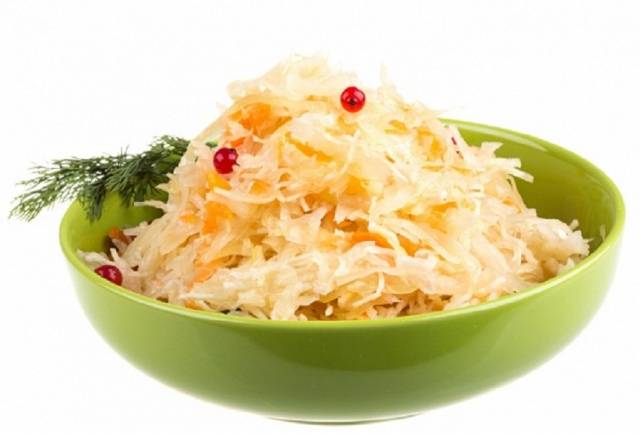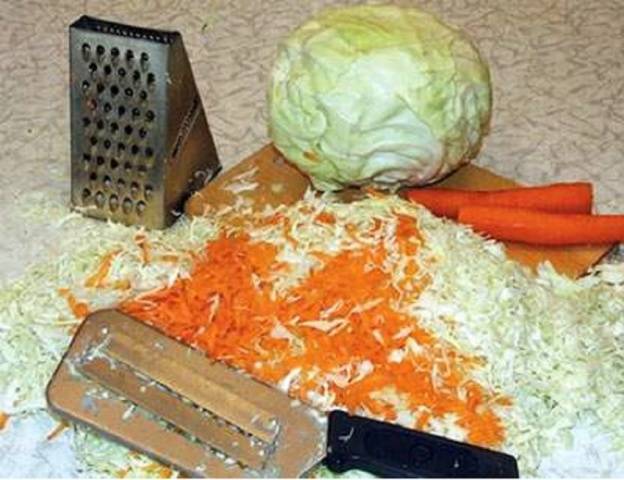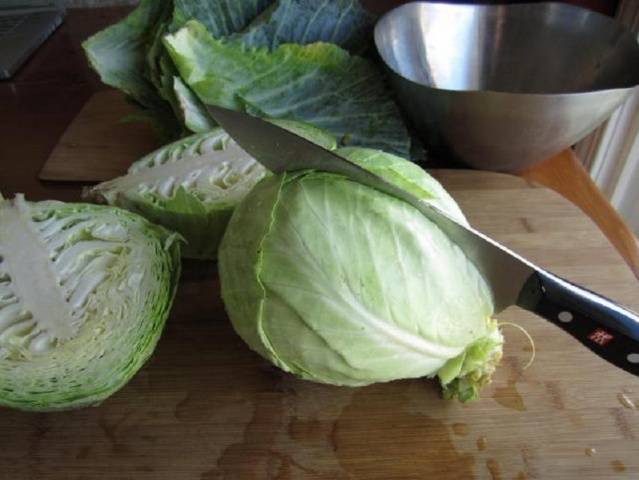Cabbage is stored in different ways in winter. Salting is one of the most delicious and popular methods. What could be better crispy salted cabbage with sunflower oil?
You don't even need to add anything, many just eat a healthy snack with bread. By the amount of nutrients and vitamins, fermented cabbage is leading in winter... It improves digestion processes, maintains bowel tone, supports the immune system.
The salting process takes place when the necessary ingredients are combined. There are a lot of recipes, but it is necessary to dwell on some of the nuances of the process.
Helpful hints
Before you start salting cabbage in a bucket, you need to know that this simple matter has its own subtleties. First, the timing. Naturally, no one salt cabbage in the summer. Only winter varieties are used for recipes. Therefore, the optimal time is the onset of the first frost. One more nuance. A salted vegetable on the growing moon turns out to be tasty and crispy, and on the waning one - peroxidized and soft. It's good if you are used to following the recommendations of the lunar calendar. This is a useful aid in the culinary business, especially when pickling vegetables in a bucket.
Secondly, the choice of a variety for pickling in a bucket. To get crispy, firm cabbage, choose late or mid-late varieties with white, dense heads of cabbage of a uniform color. Winter varieties and hybrids are distinguished by dense heads of cabbage with coarse leaves. If you take loose forks with green leaves, then the expected result may not be obtained.
There are more leaves, but one stump. Therefore, there will be less waste, and a large head of cabbage shreds more easily.
Thirdly, a container for salting. It is generally believed that the tastiest cabbage comes from wood barrel or tub. Naturally, wood has magical properties for culinary professionals. But in modern conditions of high-rise buildings or small garden houses, not every owner wants to buy large containers for salting. Therefore, summer residents are looking for other options. A good taste of pickles is obtained when using enameled pots, cans or glass bottles. Be sure to check the integrity of the container. There should be no delamination, chips or cracks on it. Cabbage is often salted in a plastic container or bucket, which is very convenient. However, the taste of cabbage is not as rich as in a wooden container.
The acid in the snack reacts with aluminum. This is unhealthy and the cabbage will taste metallic.
In this article we will tell you, how to pickle cabbage in a bucket. Such a container is present in every home, and the hostess will have no difficulty in allocating a separate bucket for salting.
Preparatory procedures
Almost all housewives know how to salt cabbage for the winter. This requires salt, carrots and dense heads of cabbage.
But you need to prepare quality components. Let's dwell on the choice of the main ingredient for pickling - cabbage heads.
White cabbage is suitable for salting in a bucket. Look for forks with whole green leaves on top. If the leaves are removed, the cabbage may be frozen. Try not to take these heads of cabbage. The inside of the forks should be white. After salting, such cabbage turns out to be juicy and crispy.
Be sure to check the ripening period of the variety. Early and medium varieties are soft and not crispy when pickled. Choose heads of cabbage that are the right size for your hand.It is inconvenient to chop small heads of cabbage, but when you cannot grasp the forks with your hand, this also causes discomfort.
Choose sweet and juicy carrots. It is important that root crops, like cabbage heads, are free of severe damage and signs of rotting.
The classic proportion for salting 5 kg of cabbage - 100 g of salt and carrots. To make the dish look brighter when finished, housewives increase the amount of carrots to 150 g.
The following additives add piquancy to the taste of sauerkraut in a bucket:
- Fruits, berries - cranberries, apples, lingonberries;
- vegetables - bell peppers;
- spices - caraway seeds, dill.
To be sure to get a crispy snack, cooks advise adding grated horseradish and oak bark in a pharmacy package (5-7 g per 1 kg of vegetables) to a bucket.
Cooking options
For salting, we will prepare a plastic bucket of a convenient volume. It is important that there is enough for the whole family and not to offend the guests. Salting vegetables in a plastic bucket is convenient and beneficial. The container can be selected in any size, the cost of the container is small and it will not be difficult to purchase it.
Prepare the carrots in advance. Wash, peel, grate. The beautiful orange hue of sauerkraut is due to the brightly colored carrots.
Free the cabbage forks from the top green leaves and stumps. It is better to cut the head of cabbage in half or into 4 parts.
It depends on the size of the cabbage. Shred cabbage with a chopper knife or an ordinary chef's. If you have never worked with a chopper, then be extremely careful. Too narrow strips should not be achieved, such cabbage rarely turns out to be crispy.
Put chopped cabbage and carrots in a bowl. In it you need to salt and mix vegetables. Stir with your hands until the juice begins to stand out. Now we transfer the "salad" to the pickling bucket in layers. We also compact each layer well until the juice is released. The layers in the bucket are interspersed with additives (if necessary) - cranberries, dill seeds, lingonberries. So, we continue until the bucket is full. Cover the top of the bucket with clean cabbage leaves, which were removed from the heads of cabbage before shredding.
The next step is to put oppression on the bucket. Before stowing the load, cover the cabbage with a wooden circle or a lid from a saucepan that is smaller than the bucket. You can use a dish or plate by turning it upside down. The role of the load will be perfectly performed by a clean stone, a bottle of water.
Cover it with a clean cloth or gauze before placing it on the plate.
Storage rules
We salted the cabbage in a bucket. Now you need to know when it will be ready and can it be stored for a long time?
For the first 3-6 days, we keep the container with the vegetable at room temperature (20 ° C - 22 ° C). The number of days depends on the volume of the bucket in which the cabbage was salted. The larger the volume, the longer we keep in the room. If the temperature indicators in the first days are lower, then the fermentation process may slow down or stop. When warm, cabbage ferments quickly.
Finding out how fermentation proceeds is very simple. If there is foam and bubbles on the surface, then everything is fine. As soon as the process is started, we regularly remove the foam, and we pierce the cabbage daily with a wooden stick to release gases.
When the volume settles and the juice almost ceases to be released, this indicates that the product is ready. The cabbage should be tasted before being stored. If there is not enough acid, we will leave it in the room for a couple of days.
Further storage takes place at a temperature of 0 ° C ... + 5 ° C. We place the bucket in the cellar, basement, balcony or refrigerator. For convenience, you can transfer the product to a smaller container.
The modern way of storage is freezing. Sauerkraut, like fresh vegetables, put in bags and place in the freezer.
Sauerkraut is a wonderful product that no meal is complete without. Bon appetit and new recipes!











